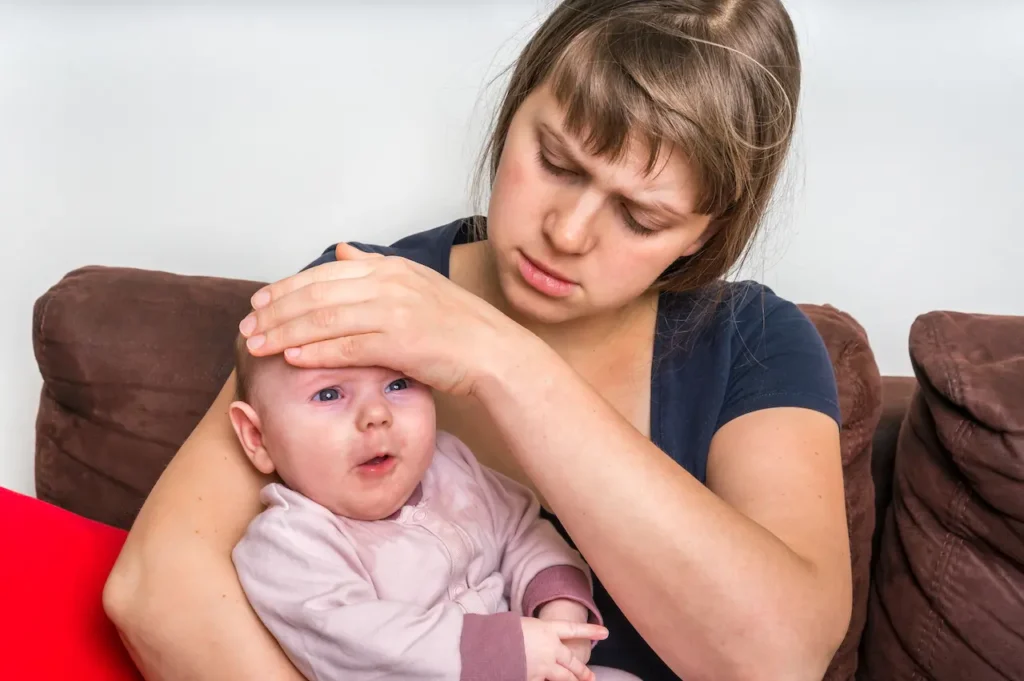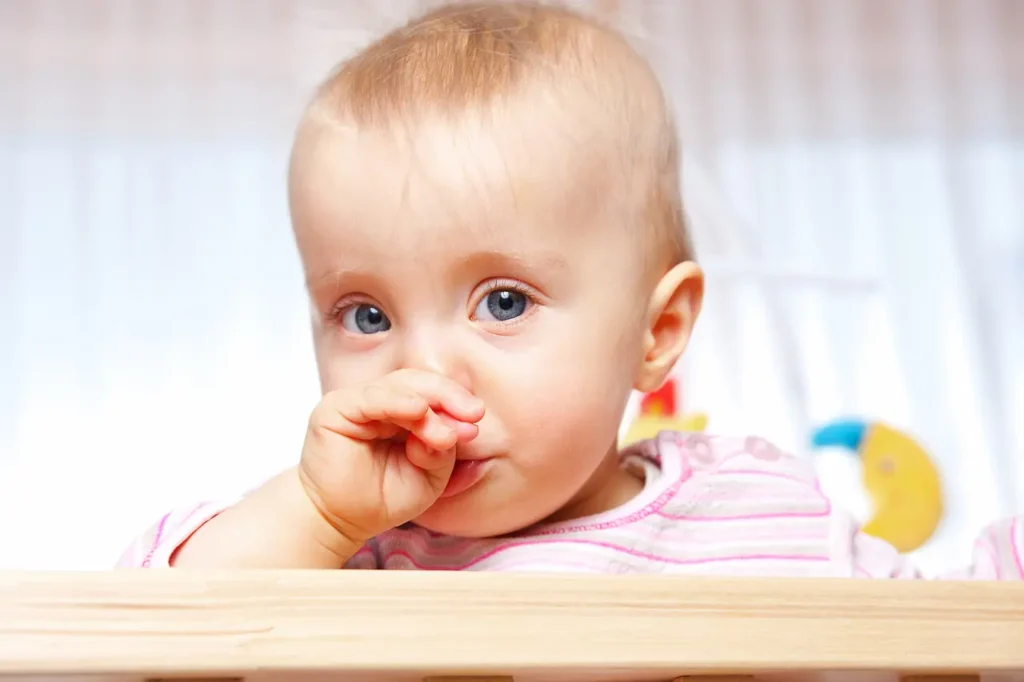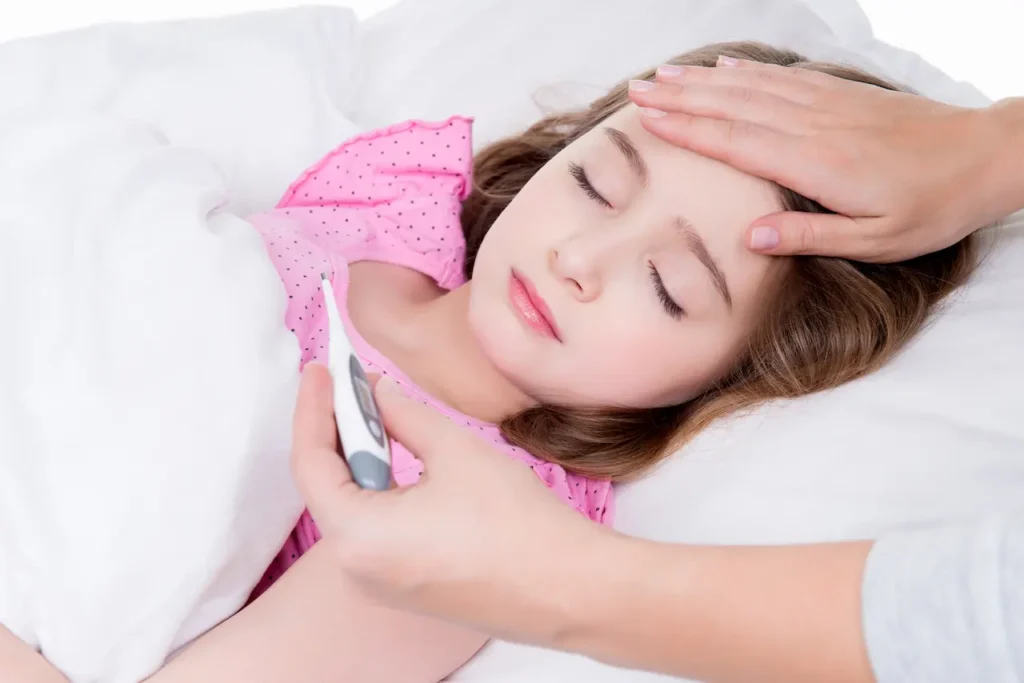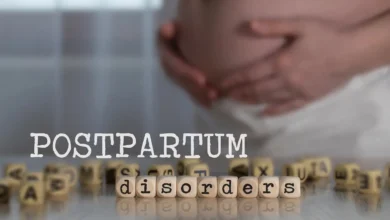How to Spot the Early Signs of a Cold in Your Baby
Understanding the Common Cold in Infants
Parents can become very worried when their baby or infant gets a cold. How to spot the early signs of a cold in your baby is crucial, as the symptoms–congestion, coughing, low-grade fever–can be alarming and may leave parents feeling helpless. A child will experience eight to 10 colds by the time he or she reaches two years of age. You can better care for your child by understanding the symptoms.
What to Look for in Infants with Cold Symptoms
Signs of a cold are often similar in infants and adults. Symptoms include
- A runny nose is one of the most common signs. The mucus may be clear at first, but will become thicker and discolored with the progression of the cold.
- Nasal congestion: Babies who struggle to breathe out of their noses may become irritable and have difficulty eating.
- Fever: A low-grade temperature may occur, which is a sign of the body’s response to an infection.
- Loss of Appetite: Babies may not want to nurse or eat due to discomfort.
- Cough: A cough can be triggered by mucus that trickles down your throat.
- Fussiness: Babies can become irritable, difficult to calm down and show signs of discomfort.
- Slightly swollen Glands: You may notice a slight swelling of the glands in your neck.
While babies are unable to express their discomfort verbally, their behavior can give important clues. Changes in sleeping or feeding patterns can indicate underlying issues, such as a stiff neck or congestion.

The Symptoms in Detail
You can monitor your baby more effectively if you understand these symptoms.
- Runny Nos : At first, the discharge will be thin and clear. This indicates that the body is trying to flush the virus out. The mucus can become thicker as the cold advances, and may even change color from yellow to green. This is a normal immune response.
- Nasal congestion: Babies are primarily able to breathe through their noses. This makes nasal congestion a problem for them. It can be difficult for babies to sleep and eat when their nasal passages become blocked. Watch for signs that indicate difficulty breathing or eating.
- Fever A mild fever is quite common, and usually indicates that your body is fighting an infection. It is important to closely monitor the temperature. A fever in an infant, especially one under three months of age, is a serious concern.
- Loss of Appetite A baby might refuse to feed or eat solid food if they are experiencing discomfort or a sore throat. Dehydration can result, so be sure to monitor fluid intake.
- Cough : Coughing is distressing to both parents and babies. The cough may begin as dry, but as the mucus builds up it can become productive. If the cough continues or gets worse, you may need medical attention.
- Fussiness : Babies who are in discomfort often become more irritable. It may be that they cry more and are difficult to calm. You can gain insight by observing their sleeping patterns. Frequent wakings can indicate distress.
- Swollen Glands : A slight swelling of the lymph nodes can occur as a result of infection. Consult a health professional if they become very swollen, or if you have other concerns.
Treatment Options for Baby Colds
There is no cure for a common cold. Medications are not generally recommended for children younger than six years of age. There are a few remedies that can help your baby feel better:
- Saline Nose spray can loosen congestion, making it easier to breathe for babies. You can use it multiple times per day.
- Nasal suction. Using a bulb syringe, you can remove mucus in the nasal passages. This is particularly helpful before feedings and naps.
- Humidifier: A cool-mist humidifier can maintain moisture in the atmosphere, helping to ease congestion and promote easier breathing. Make sure the humidifier has been cleaned to avoid mold growth.
- Soothing: More cuddles can soothe a fussy child. You can relieve nasal pressure by holding them up.
- Warm baths : A warm bathtub can soothe a baby who is congested. Steam can loosen mucus and make it easier to breath.
- Hydration: Ensure that your baby is hydrated. Breast milk or formula can be given more often to ease discomfort and prevent dehydration.
- Comfortable Posing: Sleeping your baby slightly higher can help them breathe and reduce congestion.
How Long Does a Cold Last in Babies?
A cold usually lasts between seven and fourteen days. Although severe symptoms usually resolve within a few weeks, some children can experience persistent coughs and runny nasal passages for as long as two weeks. To help with symptoms, parents should have a saline spray or suction devices on hand.

When to Consult a Pediatrician
The majority of colds will resolve on their own, but some symptoms can indicate a more severe illness. For example, RSV (respiratory virus), which is dangerous for babies. Seek medical advice immediately if you:
- If your baby is less than three months and has cold symptoms (especially a fever), you should seek medical attention.
- If the baby’s diapers are less wet than normal, this could indicate dehydration.
- The fever is higher than 102.2 degrees Fahrenheit.
- The ear may be infected if the child pulls at his or her ears or shows increased irritability.
- If they have red eyes or an unusual discharge, this could be a sign of conjunctivitis.
- A persistent cough or breathing difficulty could indicate a more severe condition.
- If you notice a wheezing, high-pitched sound or a pulling sensation around the ribs when they are breathing.
Emphasizes the importance of listening to your instincts. It’s best to speak with your pediatrician if you have any concerns. Your observations may provide important information to help in the care of your child.
How to Prevent Colds in Babies
It can be difficult to care for a baby who is sick, especially if you are also suffering from a cold. Consider these measures to protect your child against illness:
- Frequent handwashing: wash your hands frequently, especially after you sneeze or blow your nose. This simple action can reduce the risk of spreading germs.
- Avoid Contact with Sick People: Keep your baby away from sick people. Avoid crowded areas where germs can spread.
- Disinfect Surface: Clean high-touch surfaces in your home, such as light switches, doorknobs and countertops. Maintaining cleanliness is important because germs can survive on surfaces for many hours.
- Keep Distance in Public When in public, keep your child at least six feet from anyone who is exhibiting signs of illness. Use a baby carrier to avoid direct contact while keeping them close.
- Mind Whom Your Family Keeps Encourage sick guests to postpone their visit until they have been symptom free for at least 24 hour. Children who have not yet mastered the art of hygiene should be discouraged from contacting a baby.
- Breastfeeding. If possible, breastfeeding your baby can provide them with antibodies that boost their immune system. Continue to breastfeed as long as possible, especially in the cold and flu seasons.
- Limit Smoke Exposure: Secondhand smoke can irritate a baby’s respiratory system and make them more susceptible to colds. Make sure that you smoke-free environment.
What to Do if Your Baby has a Cold?
Parents can learn about the three stages of a cold by understanding what to expect.
- First 3 Days: The baby will appear more fussy, may have a mild fever and develop a runny, clear mucus-filled nose. It is at this time that they are the most contagious.
- Middle three days: The fever usually subsides, and the mucus can thicken or change color. Mucus drainage can cause coughing, and parents might notice their baby becoming more irritable.
- The Final Three Days. As the baby starts to recover, the mucus can become crusty. The baby may resume normal activity, but coughing can last for a few days.

How to Comfort Your Baby When They Have a Cold
You can make your baby feel more comfortable even though there is no cure. Here are some ideas:
- Remove Mucus : Clearing your baby’s nasal passages regularly can make it easier for them to breathe. You can gently remove mucus with a bulb-shaped syringe.
- Hydration: Ensure that your baby is hydrated. This is especially important if their appetite has decreased. Offer formula or breast milk more often.
- Cool Mist Humidifier can be used to relieve breathing problems and congestion. To prevent mold growth, keep the humidifier clean.
- Warm baths: A warm bathtub can soothe a congested baby. Steam can help loosen mucus.
- Physical Contact can provide comfort. Holding your baby, gently patting them, or rocking them can help to soothe their discomfort.
- Keep them Upright: If possible, place your baby’s head in an elevated position while sleeping to ease breathing.
Conclusion
Any parent should be able to recognize the symptoms of a baby’s cold and know how to treat it. Colds are distressing, but knowing what to watch for and how to care for them can help.
Responding to your concerns can ease your worries. Comfort is the key. Most colds will resolve themselves. Do not hesitate to contact your pediatrician if you notice any changes or symptoms that are concerning. You can ensure your child’s comfort and health by using your intuition and attention.
You can handle your baby’s cold more confidently if you are informed and prepared. Preventive measures, monitoring of symptoms and comforting your infant will help them feel better, but it will also reduce the stress associated with caring for an infant who is sick. Your love and care is the best medicine for your baby.



